 Background to This Revival
Background to This Revival
This revival mostly affected the blackbirded/indentured servants working on sugar plantations in Queensland Province of Australia. These laborers, numbering up to 60,000, were brought in from the Solomon Islands and New Hebrides (modern-day Vanuatu) and were commonly referred to as “Kanakas,” from the Hawaiian word for “man.”
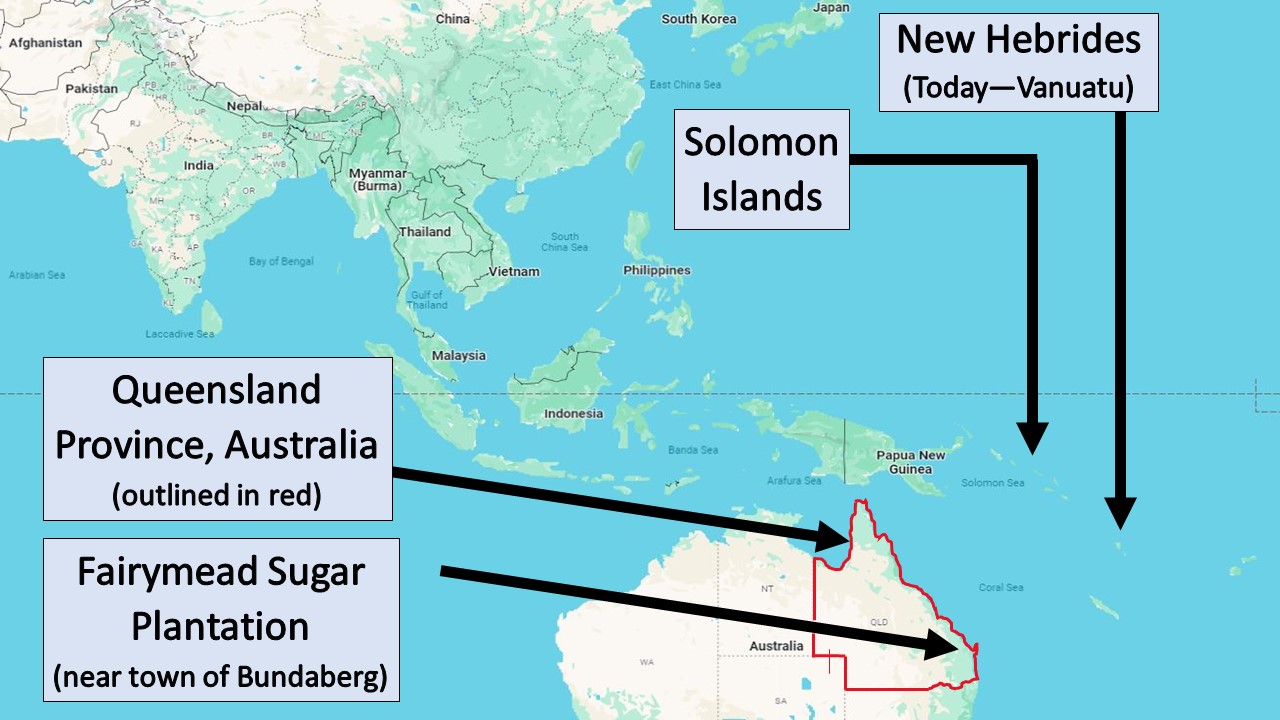 A mission was established to teach and share the Gospel with these animistic laborers, and it was within this community that the revival took place. The revival significantly strengthened the faith of these new Kanaka believers, equipping them to return to their islands to evangelize, establish schools, and plant hundreds of churches.
A mission was established to teach and share the Gospel with these animistic laborers, and it was within this community that the revival took place. The revival significantly strengthened the faith of these new Kanaka believers, equipping them to return to their islands to evangelize, establish schools, and plant hundreds of churches.
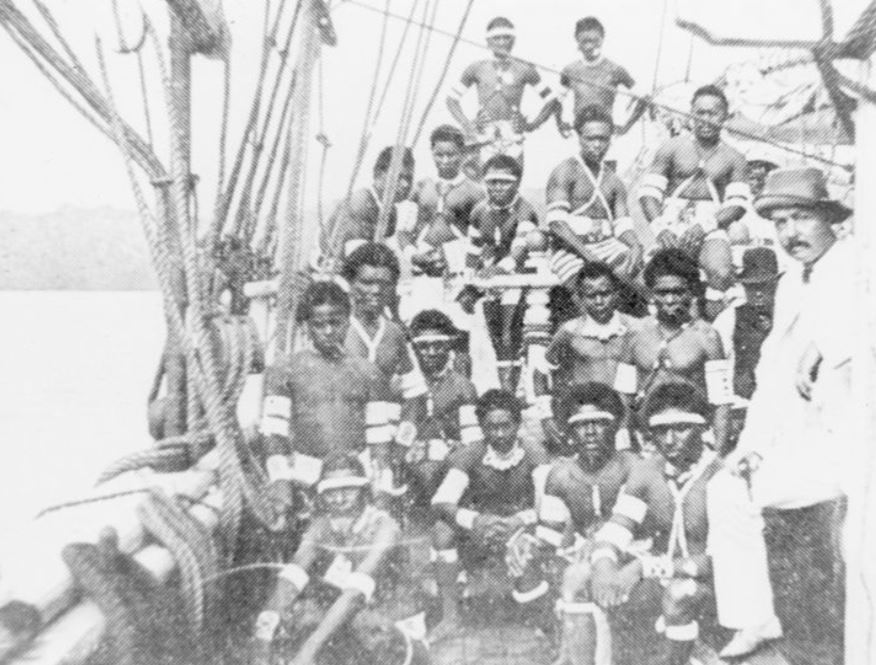
Group of contracted islanders brought to
Queensland, Australia by ship
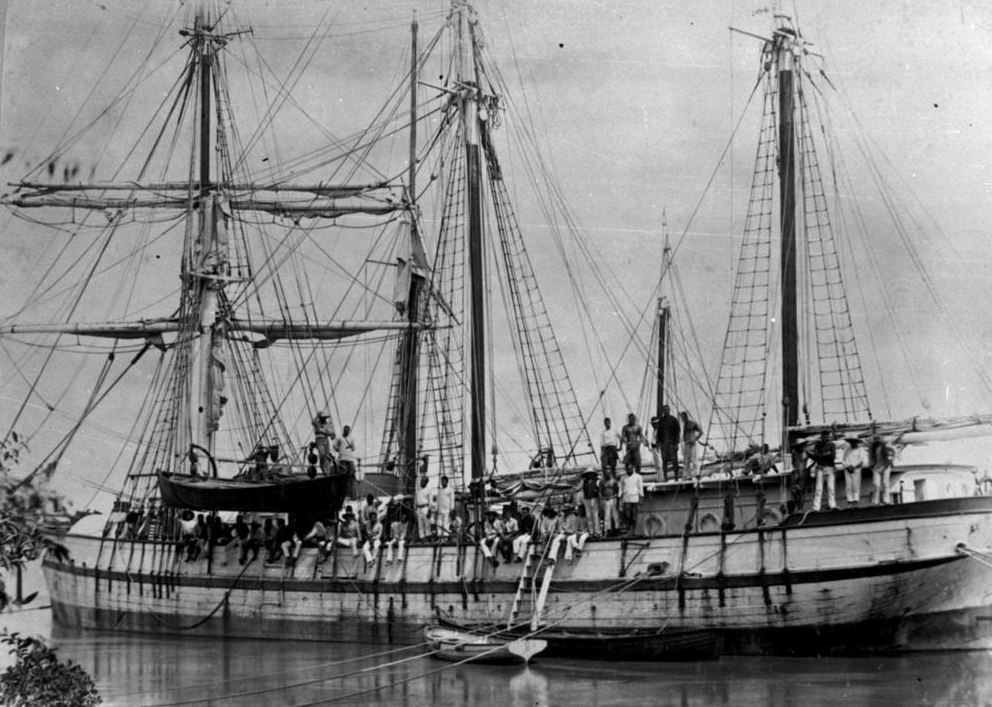
Ship bringing Islanders to work the plantations
in Queensland, Australia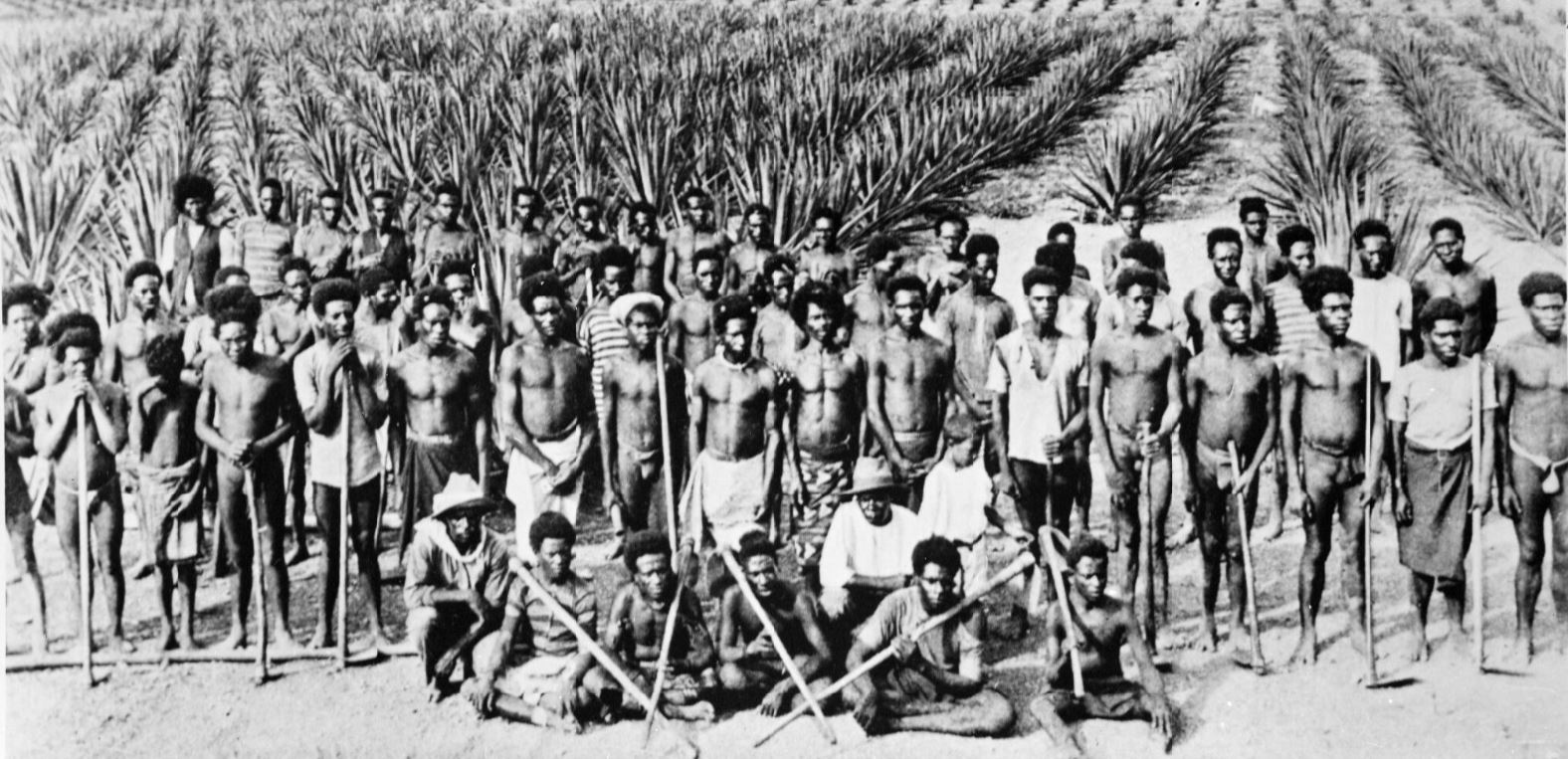
Kanaka laborers in Queensland, Australia
Life in the Islands
Life on many Pacific islands was dominated by animism, with its accompanying superstitions and fears. Because of their notorious lawlessness, and of them being unwelcoming of outsiders, missionaries had a difficult time entering, some paying with their lives while trying.
► Daily life was guided by “ancestral spirits.”
► Deaths were attributed to sorcery, leading to revenge murders of innocent victims.
► Skill in murder was honored.
► Cannibalism was widespread, even of family members.
► Women faced childbirth alone, or the spirits were said to become angry and inflict the tribe with sicknesses and death.
► Infants who cried excessively were to be buried alive by the mother. If she didn’t, death was believed to then come to every child she would hear.
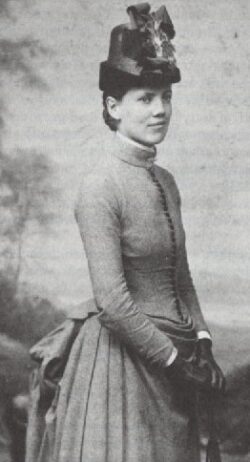
Florence Young
Start of the Queensland Kanaka Mission
In 1882, Florence Young, of Sydney, Australia, visited her family’s sugar cane plantation near the town of Bundaberg (Fairymead Sugar Company). There, she developed a love for the Kanakas, who had been brought from their island homes to Australia to work the cane fields under three-year contracts.
Young’s desire was to teach the Kanakas about Christ. She began with a class of ten young men, teaching only on Sundays in an old wooden shed. Little did she know that her work with these men would sow the seeds for the establishment of the Church on their home island.
Night Classes
In 1885, Jimmie, one of the Kanaka students from the island of Aoba (also known as Ambae) in the New Hebrides, told Young that one class a week wasn’t enough and that he wanted to learn more. In response, Young began a night class, gathering a small group of men for further teaching.
Jimmie soon placed his faith in Christ for his salvation and began to pray for others from his island who were also at the plantation. Nine months later, Jimmie died of tuberculosis, but by then, twelve of his friends from Aoba had converted to Christ and were among the first to be baptized in April and September of 1886.
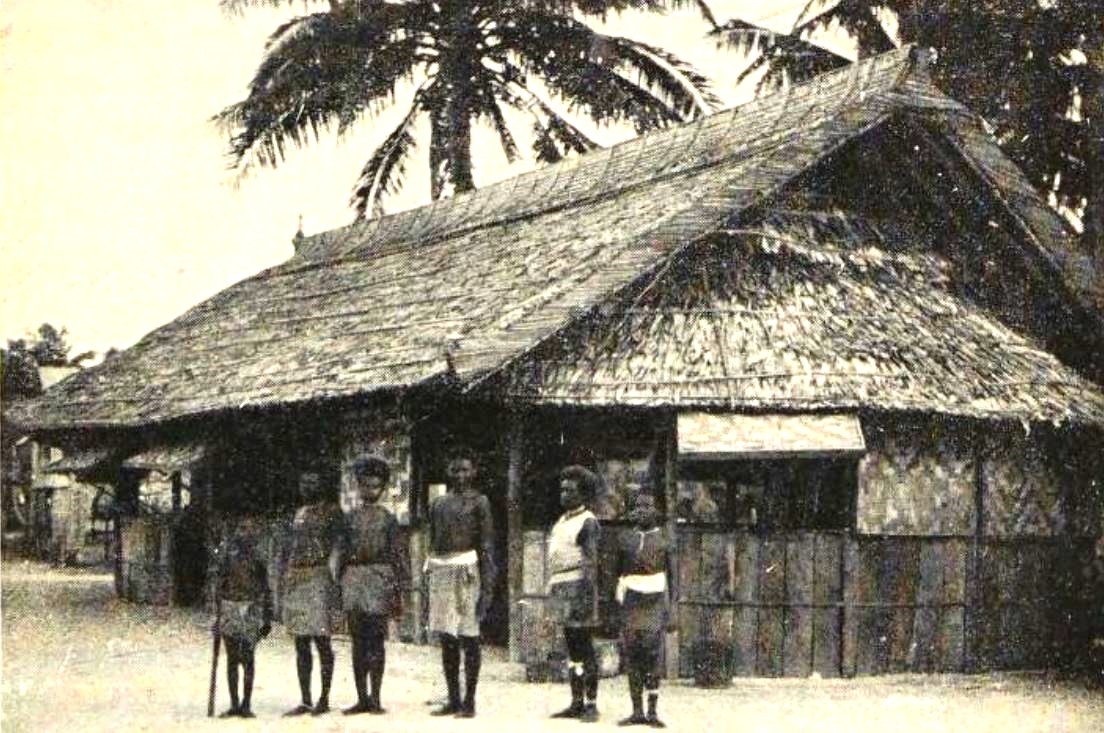
School at Onepusu, Island of Malaita
The School Expands
By 1886, Young’s class had grown to about 80 men each Sunday and 40 each evening. She then envisioned expanding her school to other Queensland plantations to reach the 62,000 Kanaka who had been brought in.
Following a letter Young sent out to family and friends seeking support for expanding her mission, she received donations that led to the establishment of Queensland Kanaka Mission in 1886. This mission would later became the denomination known as the South Seas Evangelical Church.
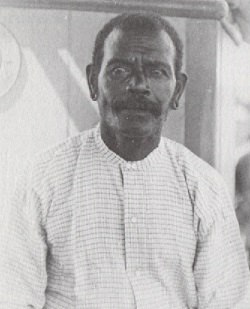
Peter Ambuofa
Peter Ambuofa—One of the First Islander Missionaries
In July 1894, the converted Peter Ambuofa, along with two other Islanders, volunteered to return to Malu’u, their home village on the northern tip of the island of Malaita. Upon their arrival, they faced pressure from family and friends to return to their animistic practices. While two of the group turned away from Christ, Ambuofa remained faithful, enduring the hardships of being isolated and ostracized by an animistic culture.
Separate Christian Villages
Due to strict animistic traditions that Ambuofa and other returning Kanaka believers could not embrace, they were required to establish separate Christian villages.
As they planted gardens for food, God miraculously supplemented it, especially during droughts. Witnessing this miracle provision of food, others began to notice the power of Ambuofa’s God, leading to a gradual increase in people associating with him.
Immigration Policy Change
The Australian government passed the Immigration Restriction Act of 1901, requiring all Kanakas to be deported by 1906. Those that had already voluntarily returned to their island homes to preach the Gospel faced certain death, and many were killed. Those awaiting forced expulsion began to pray earnestly, asking for strength to remain faithful upon their return and to stand firm in Christ despite the opposition they would face in rejecting their people’s animistic practices and traditions.
Expansion of the Queensland Kanaka Mission
During the years that followed, the Queensland Kanaka Mission (Q.K.M.) expanded, installing a team of missionaries and using Kanakas to teach in the Bible classes, or “schools,” as they were called.
Some of these islanders would volunteer to work on plantations that didn’t have a school, and while there, they would start Bible classes to introduce others to Christ.
By 1904, the Q.K.M. had achieved the following:
► They were operating out of 11 locations in Queensland.
► They had 19 missionaries employed.
► They had over 100 unpaid Kanaka teachers.
► They had 6,000–7,000 people attending weekly Bible classes.
► They had 2,484 converts who had been baptized.
► Many of these converts became soul-winners.
Queensland Kanaka Mission Relocates
As the stream of Kanakas returned to their homes, they began requesting missionaries to come and assist them in their work.
Although the Anglican, Roman Catholic, and Methodist churches were present in some parts of the Solomon Islands, Malaita, the most populous island, remained largely in the darkness of animism and was almost untouched with the Gospel. Sensing the deep need and having a clear call from God, the Q.K.M. decided to form a Solomon Islands branch of the Q.K.M. in January 1904.
First Queensland Kanaka Missionaries Arrive in Malaita
Fully engaged in the Q.K.M., Florence Young and others made visits to the Solomon Islands, opening mission centers and getting missionaries placed there.
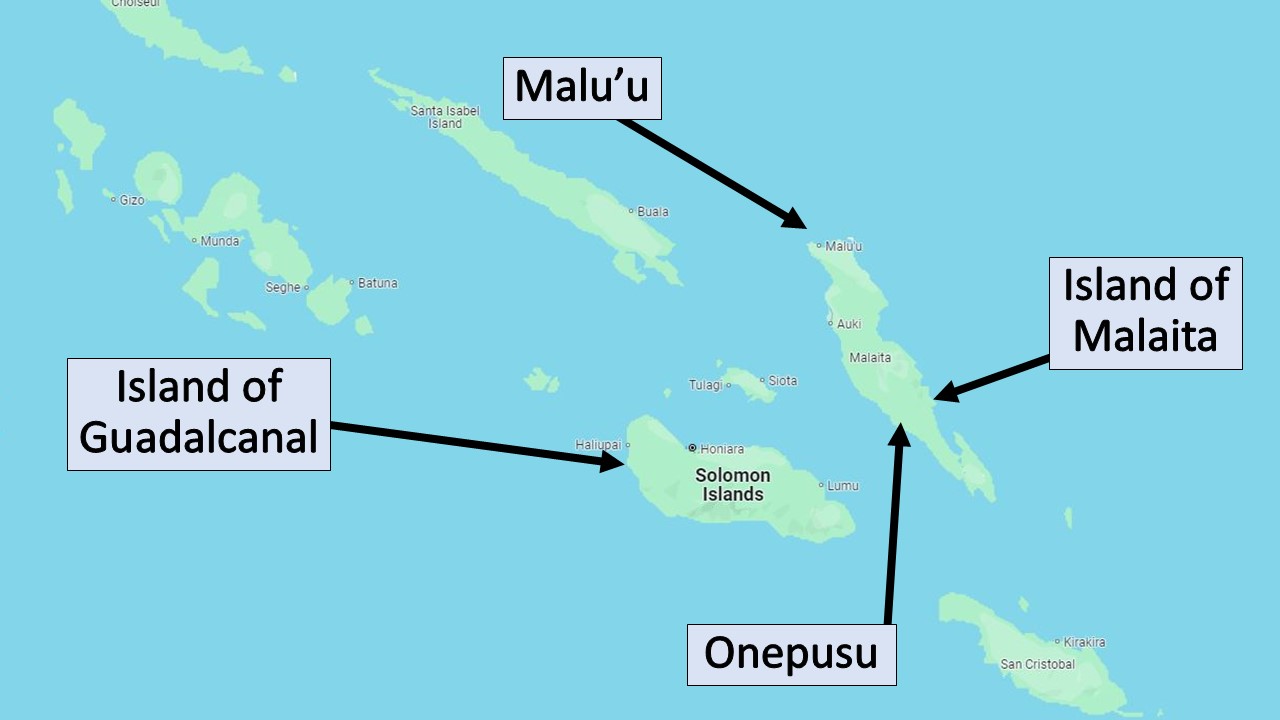
Solomon Islands
Meeting of Peter Ambuofa
During a Q.K.M. visit to the island of Malaita in 1904, the boat carrying the Q.K.M. team arrived at the village of Malu’u, where they met Peter Ambuofa. He had been conducting ministry in that village since his return from the sugar plantations in 1894.
Ambuofa shared exciting news with the Q.K.M. team: his parents and four brothers had all converted to Christ, and 200 people were regularly attending Bible lessons each Sunday.

Groups of Kanaka teachers at roll call
The Faithfulness of the Kanaka Believers
Although the Kanaka believers were not perfect, much like their European counterparts, their faith and commitment to Christ often put the Europeans to shame. Their dedication to ministry and their joyful singing replaced their previous behavior of drinking, gambling, fighting, and sinful conversations.
These Kanaka Christians also became effective soul winners, many persevering in their efforts to lead others to Christ. They were also “cheerful givers,” supporting Florence Young for 9 years while she served as a missionary in China, as well as supporting the Q.K.M. that was starting on their home islands.
Prayer Revival
There are several types of revivals, as presented by Elmer Towns in his book, The Ten Greatest Revivals Ever:
1. Repentance Revival: emphasis on cleaning up one’s life and society.
2. Evangelism Revival: emphasis on winning souls to Christ.
3. Worship Revival: emphasis on magnifying God.
4. Deeper Life Revival: experiencing God’s indwelling.
5. Spiritual Warfare Revival: battling demons and Satan.
6. Holy Spirit Revival: emphasis on the Spirit’s manifestations.
7. Reconciliation Revival: removing barriers to racial harmony.
8. Liberation revival: freeing from corporate and personal bondage to sin.
9. Prayer Revival: an enormous movement of intercession and prayer.
Without going into more detail about these “faces of revival,” it is worth noting that the Queensland Kanaka Revival was a prayer revival (#9 above). It was the spirit of prayer that came upon the Kanakas, and this intense prayer prepared the way for their future return to their island homes.
Foundation to the Prayer Revival
One of the Kanaka teachers had attended the April 1902 revival services conducted by American evangelist, R.A. Torrey in Melbourne, Australia. This was the “Melbourne Simultaneous Mission,” about which historian Stuart Piggin wrote:
In April 1902 he [Torrey] arrived in Melbourne, heralding probably the greatest evangelistic campaign in Australia’s history prior to the 1959 Billy Graham Crusades. The Melbourne mission was preceded by prayer, work, and unity on a staggering level.
This Kanaka teacher evidently participated in multiple prayer meetings in homes throughout Melbourne and the surrounding region, all in preparation for these special evangelical meetings, which ultimately led to salvation of 8,000 people. He brought that prayer strategy back to the sugar cane plantations.
Initially, the idea of prayer groups was met with apathy and opposition. Despite this, the faithful persisted. After a few weeks, while praying at the mission house with only about eight people present, each one fell to their knees, pouring out their souls to God, “laughing and crying for very joy.”
In prayers of total consecration, they asked God to wake them early each morning for prayer before the bell rang for breakfast—and He did! God woke them every morning before daylight for prayer, and they would pray again every evening after supper.
Young mentions the timing of this renewed prayer emphasis:
In the early part of this year of 1905, God worked in Queensland in a remarkable way, creating a deeper hunger for spiritual blessing; and a veritable baptism of prayer came upon the whole Mission.
Young continued:
Christmas, 1905, to Easter, 1906, was a time of spiritual refreshment amongst the South Sea Islanders at Fairymead [plantation], and prayer again became deep and fervent.
Charged with Divine Power
At Easter, 1906, while taking new missionaries to work at the Geraldton plantation, Florence Young visited the Hapsberg plantation, where a remarkable outpouring of the Holy Spirit was experienced during a prayer meeting. Young describes the experience:
It was Sunday evening… and now we stood at the door of a large grass house on Hapsberg plantation. Within, a bright light lit up the faces of twenty-five men… but these were hardly noticed, for a strange sense of the presence of the Holy Spirit laid hold of us. As we entered the room we were conscious of an atmosphere literally charged with divine power … but so strong was the sense of the presence of God that one could only let go everything in utter abandonment to the control of the Holy Spirit. An hour followed of intense prayer.
The next day, they encountered demonic opposition, but they broke through with their persistent effort:
We met on Easter Monday at 10 a.m. in the same little grass house—four missionaries and thirteen South Sea Islanders. For half an hour the enemy made a desperate attempt to block our access into the Holiest, but praise God, he was defeated, and great liberty was given. The hours passed rapidly, and with a short interval at mid-day, we continued in prayer until 4 p.m.
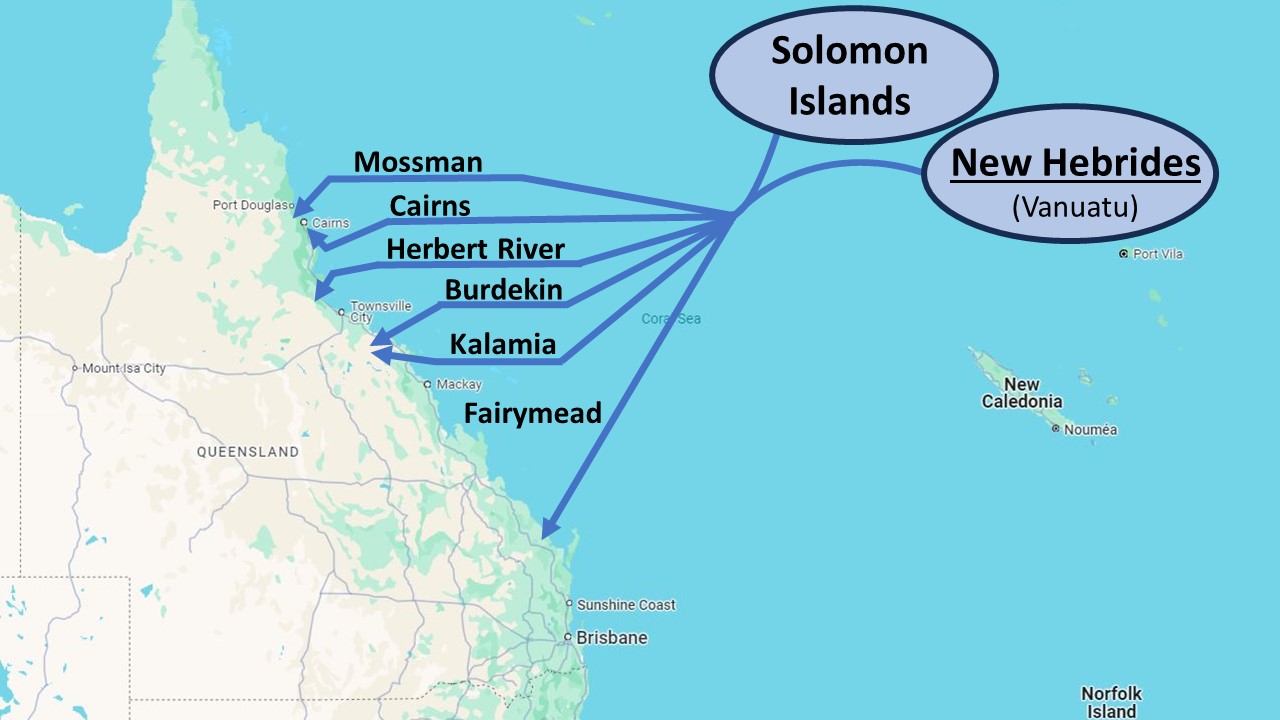
Kanaka laborers from Pacific islands, placed in many plantations in Queensland, Australia (6 locations shown)
Evangelistic Passion Arose
From these powerful encounters with God, the prayer revival spread. God planted deep in the Kanakas’ hearts a renewed passion, faith, and a willingness to even die, if necessary, to take the Gospel to their own people.
At one plantation after another, this revival spread:
► The Burdekin plantation: “At almost every class souls are turning to the Lord.”
► The Kalamia plantation: “Last Monday three Malaita men ‘signed ’—big hard cases; and three others were restored. ‘There was great joy in that city.’.. There is a spirit of prayer and expectancy everywhere.”
► The Cairns plantation: “The key-word for the latter part of the year is Revival. We hear of floods of blessing in other lands, and ‘a sound of abundance of rain’ is in our midst.”
► The Herbert River plantation: “‘O Lord, revive Thy work’ is the cry everywhere.”
From Bundaberg to Mosman, and every mission station between, the Holy Spirit was being poured out, instilling evangelist passion in the Kanaka, all in preparation for their return to their homeland.
They were learning, that:
Revival means more than blessing; the Boys [Kanaka] are learning this, and we hear the cry, ‘O Lord, bend us to prayer; bend us to Thy power; bend us to Thy Holy Spirit.’ The question is, are we willing to be bent, made pliable to Him in every detail and corner of our lives? It will cost, yes, it will cost more than we at present know, but with our eyes on Calvary, shall we not gladly pay the price, and for His sake go forward?
As each steamship carried hundreds of Kanaka at a time back to their islands, one mission center after another in Queensland was closed.
Mission Centers Established
By 1905, three mission centers had been established on the island of Malaita, in Malu’u, Fo’ondo, and Onepusu. From this point on, the mission continued to grow, with the addition of a medical doctor, a dentist, and others joining them from Australia.
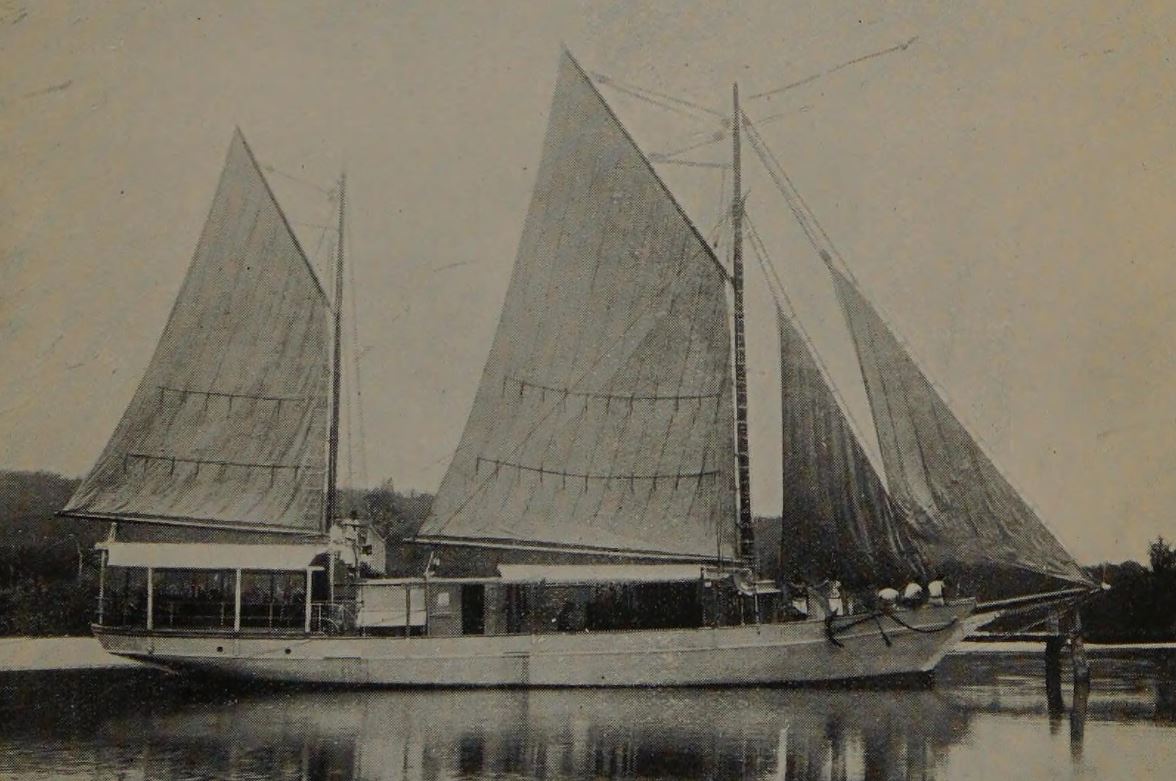
Evangel: the Q.K.M. vessel that transported their missionaries throughout the Solomon Islands
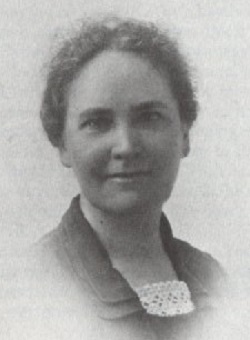
Kathy Deck
Kathy Deck, one of the missionaries that arrived in 1907, gave this report of the expansion of the work:
Many heathen are leaving their mountain villages and coming in ones and twos to live with the Christians to learn of God. Two months ago a noted old cannibal came with two young sons.
The “old cannibal” Deck mentioned had previously been a witchdoctor, had committed countless murders, and had even killed and eaten his own wife.
And so, the work continued to spread until there were around 300 churches that were associated with the Q.K.M. by 1970. With these two revivals, you can gain an even larger picture of how God has worked among the Islanders of the Solomon Islands.
► 1936 Solomon Island Revival
► 1970 Solomon Island Revival
Sources
► Evangelical Awakenings in the South Seas by Edwin J. Orr
► Evangelical Christianity in Australia: Spirit, Word, and World by Stuart Piggin
► Fire in the Islands by Alison Griffiths
► Florence Young by Wikipedia
► Florence Young: Mission Accomplished by Janet and Geoff Benge
► Florence Young and the Kanakas by Christian Today
► Pearls from the Pacific by Florence Young
► Solomon Islands by Wikipedia
► The 1902 Melbourne Simultaneous Mission by Mikey Lynch
Return to List of Revival Stories
Chet & Phyllis Swearingen:
Office: (260) 920-8248
romans1015@outlook.com
Beautiful Feet
P.O. Box 915
Auburn, IN 46706

